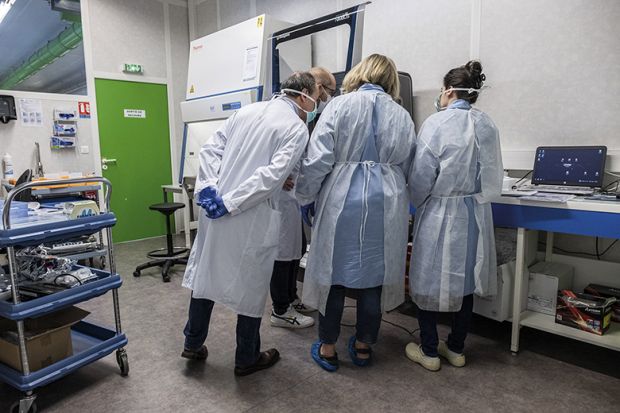I started as a lecturer at the end of April last year, and I’ve been struck by the huge transition from being a postdoc. Suddenly, instead of being a member of someone else’s lab, you become the head of your own, and starting it up is a supremely exciting time − suddenly the holy grail of job security has appeared through the mist, not to mention the opportunity to develop and test your own research ideas.
But anyone embarking on this path should be under no illusions − starting a lectureship comes with many new responsibilities. I immediately had administrative duties, lecturing, module coordination and courses to become a member of the Higher Education Academy. And my workload was perceived as representative, or even light, and indicative of a fairly supportive university. Student-facing responsibilities have tight deadlines, and it suddenly became easy to de-prioritise my research – something I never thought I would say.
The key to keeping research on track is to have your own students and lab members who can help with the hands-on components of research. However, I faced a rather large obstacle to this − I didn’t have any funding to pay anyone. So, my lab was just me and would be for a while.
So how does a new lecturer build their lab? The most obvious solution is to write grants. These allow you to hire personnel and pay for equipment and research costs, and can help you buy time from your department to devote to research.
But writing good grants isn’t simply about articulating a good idea. You need to show you are independent and are not relying on previous supervisors and mentors. This typically involves forging new collaborations, which takes time. Proof-of-concept data is required, and it’s a good idea to demonstrate that you can publish in your new area.
Simply put, getting grant funding might be a slow process − and that’s before taking into account the inevitable grant rejections. Having not long submitted my first big grant application, I’ve realised how much time and effort needs to go into it. At present, it feels unlikely that I could submit more than one large grant application per year.
Another way to build a lab is to recruit PhD students. Obtaining funding for PhD students is a little easier than getting a grant because studentships can be negotiated as part of a start-up or may be offered by institutions as matched funding for grant submissions or you can submit grant applications to local UK Research and Innovation Doctoral Training Partnerships (DTPs) in collaboration with an excellent student.
Universities also tend to have a few internally supported positions. I applied for an Economic and Social Research Council studentship, which supports collaborative PhDs between academic and non-academic partners, and was lucky enough to be awarded this funding. A particular advantage of this method is that it allows you to advertise widely for the position, which means you don’t have to have a student in mind. But even though getting a PhD student may be easier than getting a grant, don’t forget that supervising a PhD student can be challenging − they are, after all, trainees, and they deserve excellent training and mentoring.
The new lecturer on a tight budget might finally consider recruiting undergraduate research assistants. This is common in the US, but less so in the UK, where I’m based. One ethical quandary here is how to pay students. In my department, we have a scheme where 36 voluntary hours is recognised as a placement and then, beyond this, I paid them on an hourly basis from my start-up funds.
Funding for summer undergrad research assistants can be obtained through internal funds or grant bodies and if you can make funding work, I would recommend hiring them. Use your experience to help understand which tasks students can do independently and which ones require guidance and training; I found that a weekly meeting helped me keep on track with research against the backdrop of teaching.
But there were further advantages to taking on undergrad research assistants. Having them forced me to make decisions, helped me feel more comfortable making those decisions and ensured I ran experiments. Finally, this newfound supervision experience helped me think about the lab culture I wanted to foster.
I’m not going to dress it up, the early years of starting a new lab can be lonely. I went from a busy lab group as a postdoc to mostly working alone in my own office. Networking and collaborating with other academics really helped, as did making friends with other early career lecturers in my department and beyond.
Now, I’m finding myself excited about forging new links and working with smart trainees and colleagues. And it’s always important to keep in mind that despite the application aches and the publishing pains, having this opportunity remains a great privilege.
Dr Saloni Krishnan is a lecturer in the department of psychology at Royal Holloway, University of London.
Register to continue
Why register?
- Registration is free and only takes a moment
- Once registered, you can read 3 articles a month
- Sign up for our newsletter
Subscribe
Or subscribe for unlimited access to:
- Unlimited access to news, views, insights & reviews
- Digital editions
- Digital access to THE’s university and college rankings analysis
Already registered or a current subscriber? Login







